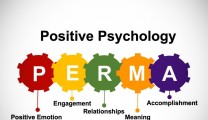The Three Roles of the Drama Triangle
The Drama Triangle, first described in the 1960s by Stephen Karpman, a U.S. therapist and co-founder of transactional analysis, identifies three primary roles: the Victim, who feels oppressed and helpless; the Persecutor, who blames and criticizes; and the Rescuer, who tries to save the day without being asked. These roles are not fixed; individuals can shift between them in various situations. Understanding these roles offers a fundamental insight into conflict dynamics, helping identify behavioral patterns within teams and organizations.
What Causes the Drama Triangle?
The Drama Triangle often originates from unmet emotional needs, a lack of assertiveness or self-awareness, and poor communication skills. Additionally, the team or organizational culture can foster it. A culture of blame, fear, or unresolved conflicts encourages the Drama Triangle, highlighting situations where psychological safety is lacking.
The Drama Triangle in Leadership
In leadership, the Drama Triangle manifests as toxic behaviors such as blame, avoidance of responsibility, and micromanagement. Leaders can also fall into the roles of Victim, feeling overwhelmed by challenges; Persecutor, resorting to authoritarian tactics; or Rescuer, micromanaging their team to ‘save’ them. This behavior hinders team growth, innovation, and collaboration.

When leaders find themselves trapped in the Rescuer role, constantly taking on more responsibilities for their team, it can lead to frustration, exhaustion, and, in severe cases, burnout. Therefore, setting clear expectations and boundaries for your team and delegating tasks transparently is essential, a skill you can acquire through the Agile Team Leadership Workshop.
Triggers and Anticipating Drama Triangle Dynamics
Leaders should be acutely aware of the triggers that can lead to Drama Triangle dynamics within their teams. These triggers may include high-stress situations, differences in opinion, changes in the workplace, or personal challenges among team members.
By recognizing these triggers, leaders can anticipate potential Drama Triangle dynamics and take proactive measures to address them before they manifest. Anticipating these dynamics involves understanding the unique dynamics and personalities within the team, allowing leaders to tailor their communication and management strategies to prevent the Drama Triangle from taking hold.
Additionally, fostering an environment where team members feel safe discussing their concerns and seeking solutions can help mitigate triggers and create a more harmonious work atmosphere.
How Do You Break the Drama Triangle?
Recognizing the underlying causes is crucial in effectively addressing the issue. By acknowledging these causes, leaders can work towards creating a healthier work environment. But how can you break free from the Drama Triangle?
Breaking free from the Drama Triangle requires self-awareness, effective communication, and empathy. As a leader, you can learn these skills, establish habits to remind yourself to use them, and create a system that fosters psychological safety and helps others escape the Drama Triangle. Remember: manage the system, not the people!
Escaping the Drama Triangle as a Leader
When asked if they recognize the Drama Triangle and which role they would claim for themselves, most leaders identify with the Rescuer role. Particularly, leaders who aim to protect their team or reduce their mental load often fall into this role. But how can you break free from this role and halt the drama from continuing?
Here, another valuable tip from Michael B. Stanier comes in handy: asking a specific question instead of offering help immediately. Ask: How can I help? This question may sound simple, and it is – but you must remember to ask it.
Apart from remembering the question, what are the advantages of this approach?
First, it forces the Victim to articulate a concrete request. This request will be specific, allowing you to decide whether you want to assist or not.
Second, and more importantly, it avoids the assumption that you know the best solution. It helps you understand the situation and the other person better, fostering curiosity and active listening. Often, the concrete request reveals different perspectives and alternative solutions.
However, be mindful of the timing and tone when using a bolder version of the question, such as “What exactly do you want from me?” as it may trigger additional emotions.
Using a Niko-Niko Calendar or conducting a thorough check-in during the initial meetings of the day can help you understand others better and decide if you should take the bold approach.
Shifting from drama to empowerment
As you can see, conflicts and the Drama Triangle are inevitable, but you can learn to escape and transition from drama to empowerment. Douglas Wick’s blog provides an excellent summary of the opportunity to make this transformation.
From Victim to Creator
Rather than feeling powerless and at the mercy of circumstances or avoiding responsibility, you can become a creator. Focus on your vision and desired outcomes, taking full responsibility for initiating action.

From Persecutor to Challenger
Instead of seeking to control and blame, you can become a challenger. Encourage learning by challenging assumptions and the status quo. Concentrate on people’s improvement and development by holding them accountable for their actions.
From Rescuer to Coach
Understanding the Drama Triangle is essential for agile leaders. By recognizing the roles, causes, and manifestations of the Drama Triangle, leaders can dismantle its destructive influence and start building a system characterized by harmonious cooperation, respectful communication, and empowered teams.
Understanding the Drama Triangle is essential for agile leaders. By recognizing the roles, causes, and manifestations of the Drama Triangle, leaders can dismantle its destructive influence and start building a system characterized by harmonious cooperation, respectful communication, and empowered teams.
At a personal level, leaders can learn to avoid typical pitfalls, escape the Drama Triangle, protect themselves, and become respected and successful leaders.












Replies to This Discussion